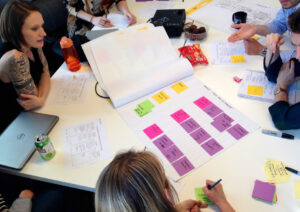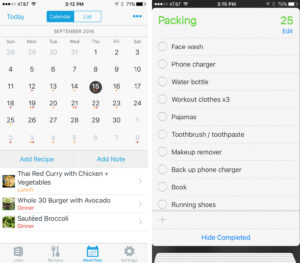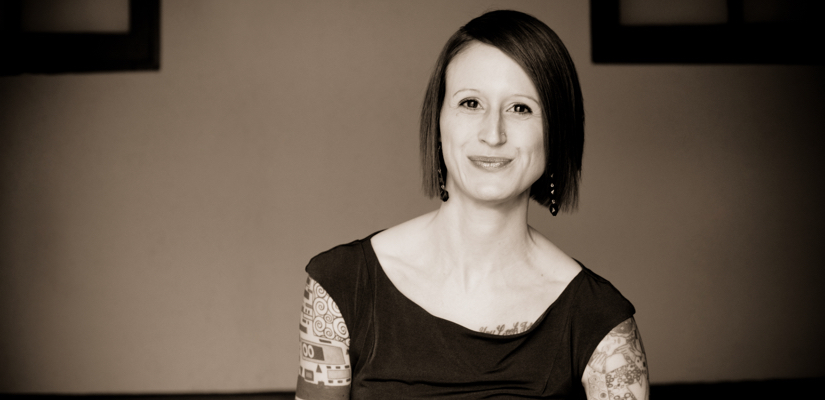Emily Rawitsch will give a talk titled “Positively Positive: Applying Design to Life” at our February networking event hosted by edX.
Emily Rawitsch is passionate about all things design. She blends product strategy, user research visual and design to make experiences more delightful and businesses more profitable.
Emily approaches design with a business mentality, rooting decisions in user research and data as opposed to personal preference. Emily has extensive experience leading design teams and collaborating with Product, Engineering, Marketing and C-level executives. She strongly believes that the best solutions emerge from a lean and iterative approach to design — where you can test and tweak on an ongoing basis.
As the Director of User Experience Design at Invaluable, the world’s leading online marketplace for buying fine art, antiques and collectibles, Emily oversees both Product and Marketing Design. She also serves on the Advisory Council for the Design Museum Boston. Designs by Emily have been recognized and published in Communication Arts, HOW Magazine, The Black Book, Step Inside Design, Rockport Publishers and the One Show Design.
How (and when) did you get into your current field or company?
I went to school for graphic design at The College of Saint Rose in Albany, NY and started my career working in small design boutiques, primarily focused on print and web design. I eventually worked my way up to being a Creative Director and got more excited about design strategy than layout execution. When I moved to Boston six years ago, I landed a lead role on a Product Innovation team, which opened my eyes to the world of Product Design — creating user experiences for web based software and SaaS applications.
Today I head up the Design team at Invaluable, the world’s leading online marketplace for buying fine art, antiques and collectibles. I oversee both Product and Marketing design, yet my primary focus is on user experience design and qualitative research via interviews and usability testing.
For me, the evolution from graphic to UX design makes sense. I’ve always been a creative problem solver who is analytical at heart. Design is about simplifying the complex, making things easier to use, optimizing processes and adding delight along the way.
What does a typical day look like for you?
Mornings are the favorite part of my day, and over the past few months I have made a conscious effort to change my routine. I used to wake up and immediately check work email on my phone while still lying in bed. Now I make sure that I wake up and do something unrelated to technology, even if it’s only for 20 minutes. For example, I may handwrite in my journal, read a physical book or workout at home with my rowing machine and free weights. It’s a way to ground myself before getting into the office.
Once I am at work, it’s about prioritizing the priorities. If you try to tackle everything it’s hard to focus, so each day I make a list of three things that I will accomplish. I even block out daily chunks of time in my Outlook calendar that I label “Design Mode.” This ensures that I have available slots to work on my projects, otherwise my schedule would fill up with back-to-back meetings all day long. I think it super important to schedule time for yourself, whether it be ‘work mode’ in the office or ‘me time’ at home.
 What is the best piece of advice that you have been given?
What is the best piece of advice that you have been given?
“No excuses.” At the end of the day, I am the only person who can design a life that I love. If I want to be successful in my career, I need to be out there learning new things, making new connections and maintaining the relationships that I have. If I want to be healthy, it takes motivation to workout and discipline to cook and eat the right foods. If I want to find balance in life, I need to create it by setting boundaries for work, scheduling time to see my friends and booking vacations to get away. There are only so many hours in a day and so much energy that we have to give. Even though we can’t control everything in life, we do have control over our attitude and how we choose to spend our time. There really are no excuses!
What other women inspire you?
I am inspired by anyone who is authentic, genuine, driven and passionate. I also admire people who own who they are, because I know that it takes courage to be yourself. When I reflect back on my career, I can think of two women in particular who made a huge impact early on.
The first is Lauren Payne, the boss at my first job out of college who is also the managing partner and co-founder of Spiral Design Studio in Albany, NY. I have always admired Lauren for being a strong leader with compassion and poise. She took me under her wing and taught me how to network outside the office. She helped me get over my fear of walking up to strangers and introducing myself — and that you should wear your name tag on the right side so it’s easier to see when you lean in to shake hands! In building my confidence and realizing that other people are simply just people, I was able to make connections that led to some incredible opportunities. By the age of 22, I was writing a monthly business column in the Albany newspaper and joined the Board of Directors for the YWCA of the Greater Capital Region.
The second woman who has inspired me is Florence Haridan, who at the time was the owner of Gathering Coaching Consultancy in Jacksonville, FL. This was about eight years ago when I was working for myself and going up against larger ad agencies to compete for work. I felt like I had to hide that I was a young woman running a one-person design studio so I played up that you would be working with “Studio Orange Design” versus “Emily.” Florence held me accountable to writing a solid business plan, defining personal/professional goals, and most importantly, to own myself. There was no need to act older or pretend to be bigger. I learned to be comfortable being myself in a professional setting, showing off my tattoos and enthusiastic personality. My clients hired me to work with me. They were hiring Emily.
This leads to my favorite part about being a woman in STEM (or STEAM). My hope is that I can pay it forward by being a positive influence and mentoring other women along the way.
What is something that most people don’t know about you?
I love being active. People smile and nod when I tell them that I run, play tennis and practice yoga. Yet people are often surprised to learn that my favorite activity is lifting heavy weights such as squats and deadlifts. I want to constantly get stronger, both physically and mentally. I also did Latin and ballroom dancing for almost 7 years… my favorites are Salsa, Hustle and West Coast Swing.
What do you geek out about?
I geek out over being organized. I always have and always will.
 As a young kid, I couldn’t wait to go back to school because that meant a new Lisa Frank Trapper Keeper that I could organize with colored tab dividers. On Christmas morning, I was a geeky and excited kid who opened gifts with a clipboard by my side, filling out a chart I created the night before. I kept track of what the gift was, who it was from and then checked off the final column when I wrote a thank you card.
As a young kid, I couldn’t wait to go back to school because that meant a new Lisa Frank Trapper Keeper that I could organize with colored tab dividers. On Christmas morning, I was a geeky and excited kid who opened gifts with a clipboard by my side, filling out a chart I created the night before. I kept track of what the gift was, who it was from and then checked off the final column when I wrote a thank you card.
Today I use a lot of technology to organize my personal life. I use Trello to keep track of my daily to-do’s in a Kanban board. I use AnyList to plan my meals two weeks out, which makes it easy to manage my grocery list. The iPhone Notes app is great for any general list you need. My favorite use is a packing list that I keep and reuse anytime I travel. Last year I used Lotsa Helping Hands to organize my care as I recovered from some major surgeries. And calendar alerts go off a week in advance so I can mail birthday cards on time.
I fully acknowledge that being this organized is both a blessing and a curse. I can be carefree when I want, yet being organized makes me happy and gives me a sense of control. It’s part of who I am and I embrace it!
Free space! Feel free to tell us anything else below
The timing of my talk on “Positively Positive: Applying Design to Life” is very significant to me. Last February, I underwent some major preventive surgeries to reduce my risk for breast and ovarian cancer. Here I am now, a full year later, fully recovered from a prophylactic double mastectomy and have learned to manage menopause in my 30’s! My talk will surround this experience — to show how I used design to organize a positive experience in being BRCA positive. I know this is a bit personal, yet I truly believe in the power of sharing.
